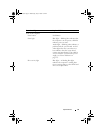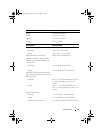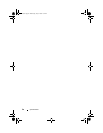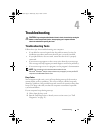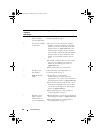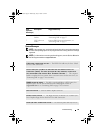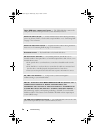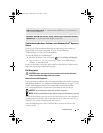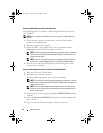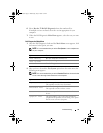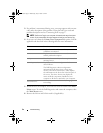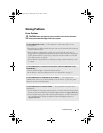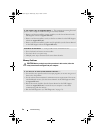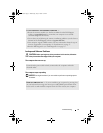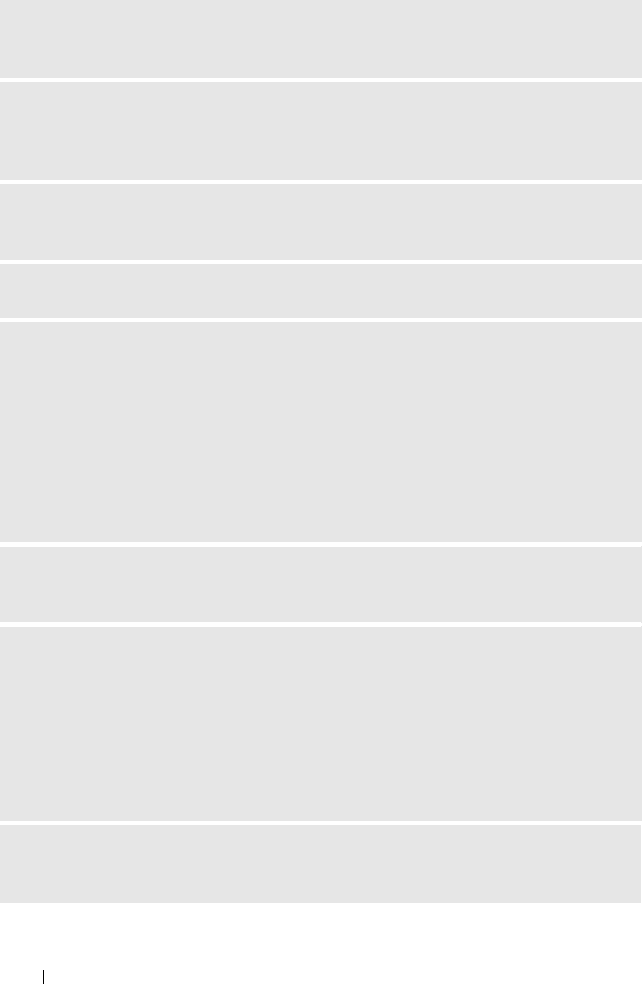
30 Troubleshooting
FRONT USB CABLE CONNECTION FAILURE — The USB cable that connects the
USB ports on the front I/O panel to the system board may be loose.
HARD-DISK DRIVE FAILURE — Possible hard disk drive failure during hard drive
power-on self-test (POST). Check cables /swap hard disks or see "Contacting Dell"
on page 57 for assistance.
HARD-DISK DRIVE READ FAILURE — Possible hard drive failure during hard drive
boot test (see "Contacting Dell" on page 57 for assistance).
KEYBOARD FAILURE — Keyboard failure or keyboard cable loose.
NO BOOT DEVICE AVAILABLE — No bootable partition on hard drive or no
bootable media in the optical drive, or hard drive/optical drive cable is loose, or no
bootable device exists.
• If the optical drive is your boot device, ensure that a bootable media is in the
drive.
• If the hard drive is your boot device, ensure that the cables are connected and
that the drive is installed properly and partitioned as a boot device.
• Enter system setup and ensure that the boot sequence information is correct.
NO TIMER TICK INTERRUPT — A chip on the system board might be
malfunctioning or system board failure.
NOTICE - HARD DRIVE SELF MONITORING SYSTEM HAS REPORTED THAT A
PARAMETER HAS EXCEEDED ITS NORMAL OPERATING RANGE. DELL
RECOMMENDS THAT YOU BACK UP YOUR DATA REGULARLY. A PARAMETER OUT
OF RANGE MAY OR MAY NOT INDICATE A POTENTIAL HARD DRIVE PROBLEM.—
Self monitoring, analysis, and reporting technology (S.M.A.R.T.) error. Possible
hard drive failure. This feature can be enabled or disabled in basic input/output
system (BIOS) setup.
TOP USB CABLE CONNECTION FAILURE — The USB cable that connects the USB
ports on the top USB tray to the system board may be loose.
book.book Page 30 Wednesday, July 2, 2008 1:51 PM




